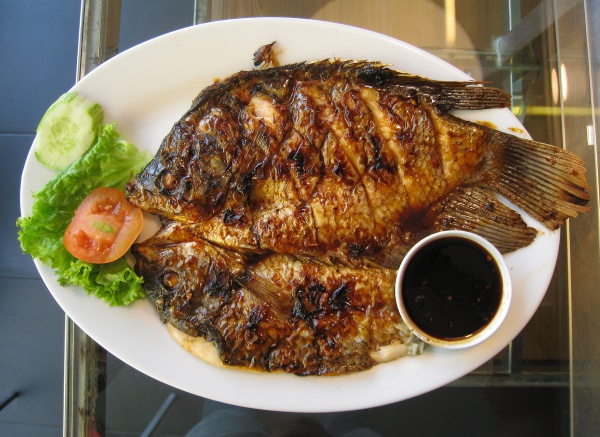Facts About Ikan bakar
Ikan bakar is a cherished dish in both Indonesia and Malaysia, featuring fish or seafood expertly charcoal-grilled to perfection. The secret to its remarkable flavor lies in the use of bumbu (spice mix), kecap manis (sweet soy sauce), and sambal (chili paste), often elevated by wrapping the fish in banana leaves. This cooking method is deeply rooted in the Indonesian archipelago, a testament to the region's abundant supply of freshwater fish and seafood.
Each region in Indonesia offers its unique rendition of ikan bakar. For example, the Sundanese from Cianjur and the Balinese from Jimbaran have their own distinctive styles. Spices and marinades can vary significantly: Javanese versions are known for their sweetness, thanks to sweet soy sauce, while Minangkabau and Sumatran versions deliver a spicier kick.
Ikan bakar is typically accompanied by sambal belacan (a spicy shrimp paste) or sambal kecap (a sweet and spicy soy sauce), along with a squeeze of lemon juice. This dish can be prepared with a variety of fish and seafood, such as gourami, carp, tuna, pomfret, and shrimp.
One of the most delightful ways to enjoy ikan bakar is by the beach—a popular experience in tourist hotspots like Jimbaran Beach, Losari Beach, and Muara Karang Harbor.
In Indonesia, ikan bakar is a year-round favorite, gaining special significance during New Year's Eve. Grilling fish and corn cobs (jagung bakar) has become a cherished tradition, making these dishes essential for New Year's celebrations across the country.

 Papua New Guinea
Papua New Guinea